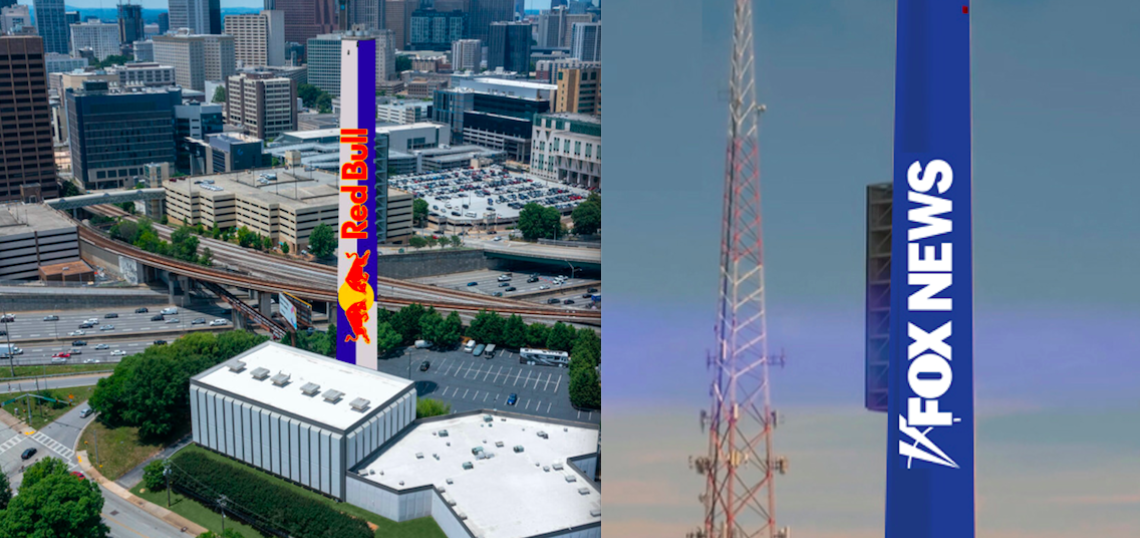
As urban landscapes evolve, so too do the landmarks that define them. In the heart of Atlanta’s bustling downtown, Corey Tower stands as a symbol of architectural heritage and historical significance. However, recent proposals to transform this iconic structure into a full-size digital billboard have ignited a debate over the preservation of the city’s skyline and the integrity of its cultural landscape.
Corey Tower, a 30-story structure recently rebranded as ‘ATL Tower,’ has long been a fixture in Atlanta’s skyline, offering panoramic views of the city and serving as a beacon of progress and innovation. Originally constructed in the 1960s, the tower has witnessed decades of urban development and transformation, becoming a cherished landmark for residents and visitors alike.
The proposal to repurpose Corey Tower into a digital billboard raises significant concerns among preservationists and advocates for scenic beauty. The transition from a traditional architectural structure to a modern, high-tech advertising platform threatens to alter the character of Atlanta’s skyline and diminish the aesthetic appeal of the cityscape.
One of the primary concerns surrounding the conversion of Corey Tower into a digital billboard is the potential for visual pollution. Unlike static billboards, digital displays emit bright lights and moving images, disrupting the natural ambiance of the surrounding environment, and detracting from the city’s unique visual character. The incessant glare of electronic advertising could compromise the tranquility of Atlanta’s skyline and drastically upset the architectural harmony that defines its character.
Moreover, the transformation of Corey Tower into a digital billboard could set a precedent for further commercialization of urban spaces and landmarks. By prioritizing advertising revenue over cultural preservation and aesthetic integrity, cities risk sacrificing their unique identity and sense of place. Corey Tower’s transition into a digital billboard represents a shift towards commodifying public space and prioritizing commercial interests over the public good.
In addition to aesthetic concerns, the proposed conversion of Corey Tower raises questions about the impact on local communities and quality of life. As one of the most recognizable landmarks on the outskirts of downtown Atlanta, the tower holds sentimental value for residents and serves as a point of pride for the city. The imposition of a massive digital billboard could disrupt the sense of community and cohesion that Corey Tower embodies, further alienating residents from their urban environment.
Furthermore, the proliferation of digital billboards can have unintended consequences for public safety and well-being. Studies have shown that exposure to excessive advertising, particularly in urban environments, can contribute to stress, anxiety, and cognitive overload. By saturating the skyline with commercial messages, Corey Tower’s conversion into a digital billboard may exacerbate these negative effects and compromise the overall livability of Atlanta’s downtown area.
In light of these concerns, it is imperative that city officials and stakeholders carefully consider the long-term implications of repurposing Corey Tower as a digital billboard. While economic considerations are undoubtedly important, they must be balanced with a commitment to preserving Atlanta’s architectural heritage and maintaining the scenic beauty of its skyline.
Alternative solutions, such as adaptive reuse or restoration projects, should be explored to ensure that Corey Tower remains a cherished landmark for future generations. By embracing sustainable development practices and fostering a sense of stewardship towards the built environment, Atlanta can uphold its legacy as a city of architectural innovation and cultural diversity.
This proposal to transform Corey Tower into a full-size digital billboard raises significant concerns about the preservation of Atlanta’s skyline and the integrity of its cultural landscape. Scenic America encourages the stewards of the Atlanta’s architectural heritage to strive for balance between economic progress and cultural preservation, ensuring that Corey Tower continues to stand as a beacon of inspiration and pride for generations to come.